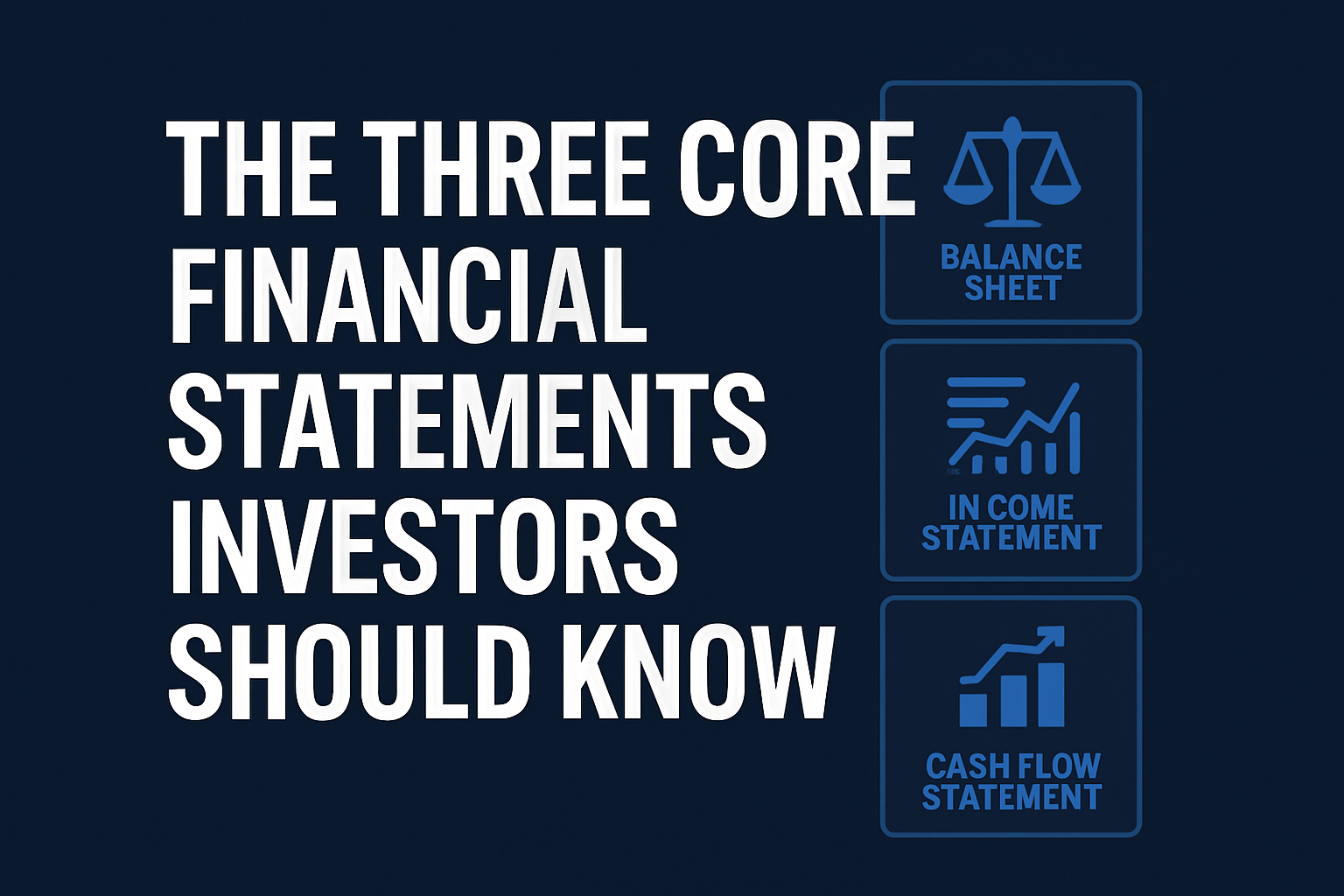The Three Core Financial Statements Investors Should Know
Every public company is required to disclose its financials in three key reports: the income statement, the balance sheet, and the cash flow statement. Here's what each one tells you — and how to read between the lines.

Whether you're building a stock screener, running a portfolio analysis, or just trying to understand what’s behind a company’s market cap — it all comes down to financials.
Public companies are required to publish three main types of financial statements, typically quarterly and annually:
- Income Statement (a.k.a. Profit and Loss Statement)
- Balance Sheet
- Cash Flow Statement
Each tells a different part of the story. Let’s break them down.
1. Income Statement — Are They Making Money?
The income statement shows how much a company earned, spent, and profited over a period of time.
Key line items include:
- Revenue – total sales
- Operating expenses – costs to run the business
- Net income – bottom-line profit after all expenses and taxes
Why it matters: This report answers the most basic question — is the company profitable? But profit can be engineered, which is why it’s only one piece of the puzzle.
2. Balance Sheet — What Do They Own (and Owe)?
The balance sheet is a snapshot of the company’s financial position at a specific point in time. It lists:
- Assets – what the company owns (cash, inventory, property)
- Liabilities – what it owes (debt, accounts payable)
- Equity – the difference between assets and liabilities
Why it matters: It helps you understand leverage, liquidity, and how well the company can weather financial shocks.
3. Cash Flow Statement — What’s Actually Happening with Cash?
The cash flow statement tracks how money moves in and out of the company. It's split into three sections:
- Operating activities – cash from core business operations
- Investing activities – cash spent on or received from investments (like equipment or acquisitions)
- Financing activities – cash raised from or paid to investors (like issuing stock or paying dividends)
Why it matters: A company might show profits on paper while burning through cash. This report shows whether the business is truly self-sustaining.
Final Thoughts: Don’t Rely on One Statement
Smart investors know better than to judge a company by a single report. Revenue growth looks great — but is it backed by real cash flow? Profitability matters — but what if the company is drowning in debt?
That’s why serious analysis starts with all three financial statements — and goes deeper from there.
At CIS Fundamentals, we provide structured, developer-friendly access to:
✅ Cleaned and normalized financials
✅ Consistent historical data across companies
✅ Fast and flexible API for fundamental analysis
Whether you're building an app, screening for value, or integrating financials into your internal tools —
our API delivers the data you actually need.